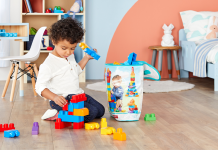We all know that the world is a chaotic place, and many of us find stress management to be a skill we lack, and one we need to get better at. But what if teaching ourselves to be calm was learned at a younger age, so that it came more naturally to us as adults?
Just like we send our children to swimming lessons or teach them how to read, what if we taught them how to calm themselves too? With this ability, they would head into their teenage and adult years better equipped to deal with life’s inevitable stressors. Here are some tips to try from Fedhealth, a medical aid company who works together with their clients to protect and enhance both their mental and physical wellbeing.
1. Breathing
It’s a fundamental part of being alive, yet most adults (and kids) don’t know how to breathe properly. Taking 10 deep and slow breaths can calm you down in any stressful situation, whether your child is sad, angry or fearful.
Durban-based personal trainer Jane Kilian teaches kids’ yoga, and she says she’s seen the power of showing children simple breathing exercises. “I had a client who told me that she sent her three-year-old son to a timeout recently, and she saw him start to take in much bigger breaths in order to calm down, because he’d learnt that with me,” says Jane. This simple tool can be used throughout life, as something that can be done anywhere, at any time.
2. Yoga
Kiddies’ yoga is closely linked to teaching them how to breathe, but it also teaches children how to be still (even just for a minute!). Besides learning discipline and how to improve their focus, it also increases their strength and flexibility, and helps them build muscle and develop the strong core they need for sitting at their desks later on. Most of all, yoga is fun for children, as it’s about playing and expressing themselves creatively – with most yoga classes designed to a theme they’ll love, such as wild animals, under the sea, or in the jungle.
3. Meditation
“I truly believe that if every child in the world was taught to meditate frequently, we’d be bringing up a calmer generation and there would be less hatred, less crime and better climate control,” says Jane. “It would literally change the world.” The best way to start doing this is together as a family. Jane recommends the Insight Timer app, which has a special kids section featuring amazing stories that don’t even seem like the meditations you’re probably imagining. These “listening stories” range from 1 to 20-minute meditations that can instantly calm your children down, as well as entertain them.
4. Affirmations
When children are building their identities, they may suffer from issues with self-esteem and confidence (don’t we all?!). Teaching them affirmations to say to themselves when they are feeling shaky is one way of showing them the power of positive thinking. This helps them deal better with conflict, in situations where they may be bullied, for example. Saying positive things about ourselves out loud has been shown to positively rewire certain parts of our brains, making your children feel valued, and helping them learn how to self-regulate better. Some affirmations you could try include: “I am brave”, “I am good enough” and “I am strong”.
5. Model it
As with anything in the parenting realm, your children will model your behaviour. Want them to be readers one day? Let them see you reading. Want them to play sport? You need to be getting out there yourself and getting sweaty. The same applies to proactively dealing with stress. If they see you doing yoga and taking big breaths when you’re angry, they’ll start to do the same. Try your first meditation tonight by saying, “Mommy/Daddy is feeling like I need to be calmer, so I’m going to listen to a meditation story now – want to join me?”
After all, we all know that being calm and mindful in order to relieve stress and tension is critical to our wellness and health. Let’s teach our kids how to do it too, so they are even better equipped to deal with it than we are.






